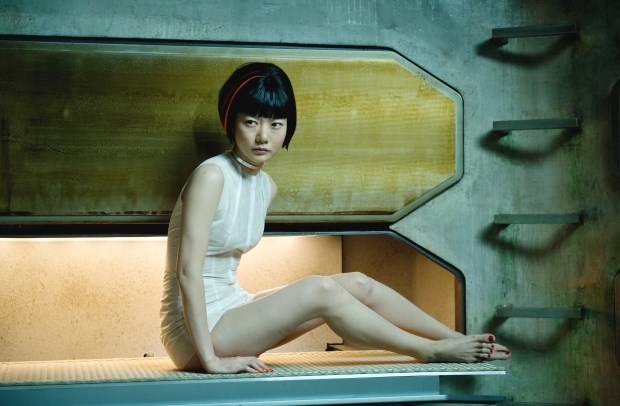It wouldn't be accurate to say Side by Side will be "unspooling" at Cinecenta Wednesday and Thursday, even though Chris Kenneally's illuminating documentary is listed as the feature presentation. But a film geek can dream, can't he?
Oh, it's showing, all right, but not in the celluloid format so many predecessors have been projected for years at UVic's Student Union Building. The Hollywood director's film, if we can even call it that, was shot and is being shown using digital technology.
Indeed, the arrival of this look at the impact of digital technology on filmmaking - Hollywood's biggest technological revolution since the advent of sound - is timely, especially with Cinecenta's recent conversion to digital projection.
Film purists and digital cheerleaders alike may be pondering the local effects of this inevitable sea change as they watch.
Of Greater Victoria's 10 cinemas, only the Roxy, Caprice and Imax Victoria haven't yet switched. With shipment of 35mm prints ending late next year, digital conversion is critical for survival.
Side by Side doesn't suggest photochemical filmmaking, the standard since 1895, is inferior, but it illustrates the inevitability of its demise. While holdouts such as Christopher Nolan (The Dark Knight) and his director of photography Wally Pfister pledge to be among the last guys shooting film, the evidence speaks for itself. Major manufacturers have stopped producing film cameras, focusing now on a new generation of high-definition digital cameras like the Red Epic and Arriflex's Alexa.
Producer and host Keanu Reeves interviews an all-star cast of Hollywood heavyweights including Martin Scorsese, James Cameron, digital pioneer George Lucas, Andy and Lana Wachowski and Steven Soderbergh with geeky enthusiasm and sensitivity as they debate the merits of film vs. digital.
Kenneally impressively distils an avalanche of opinions, anecdotes, film history and complex technological data into a neatly structured and palatable 99minute film that offers rare behind-the-scenes footage and clips from digital films such as Lars Von Trier's Dogma classic Celebration, to Cameron's Oscar-winning Avatar.
Following an opening montage of classic film clips, they explain the industry's technical history and advances in layman's terms. Once it gets down to the chips and pixels, Side by Side will be best appreciated by film geeks old enough to remember those original oversized computer floppy disks, or how the invention of Bell Labs' CCD chip was a game-changer.
Reeves deftly coaxes compelling responses, as when he presses David Lynch (Blue Velvet) on whether he's finished with film. Says Lynch: "Don't hold me to it, Keanu, but I think I probably am."
One digital-resistant cinematographer laments he isn't ready to turn in his oil paints for a box of crayons.
While even digital champions Cameron and Lucas acknowledge film's richness and wider dynamic range, the benefits of digital outweigh this, it suggests. It's cheaper to make a digital film, and lighter cameras allow for more freedom of movement. Filmmakers can also shoot longer without having to change cartridges, which Reeves jokingly acknowledges.
"I was like, 'Please, can we stop?' " he said, recalling his experience filming long-takes digitally with Richard Linklater.
While some directors love that "dailies" can be seen instantly with digital, rather than having to wait for celluloid footage to be processed, several cinematophers lament such convenience comes at the expense of artistic precision.
Director Joel Schumacher is amusingly skeptical about on-set playback, convinced actors are less interested in performances than "looking at their hair."
Robert Rodriguez is all for digital's immediacy, however. He says shooting film is like "painting with the lights off," and says he wouldn't have attempted to make his stylized gem Sin City using film.
No matter which camp you're in, it's a treat hearing such A-listers passionately pontificate, at times with amusing profanity, as when eager converts such as David Fincher (The Social Network) let it rip.
"They love the voodoo of it," he snaps, commenting on cinematographers who lament the erosion of creative input they had shooting film, when the director had to wait to see what they had lensed.
Soderbergh amusingly humanizes his affection for digital, noting he feels like saying, "Film ... I've met someone."
To chronologically address aspects of filmmaking from camerawork to editing, colour timing, visual effects and so on - Ken-neally also gives generous screen time to craftsmen and women such as colourists, visual effects artists and editors whose fingers need no longer bleed.
"I thought a mouse was something that ran across the floor," says editor Anne V. Coates (Lawrence of Arabia), recalling her introduction to digital editing. "I kicked machines quite a bit, but I learned."
The film also lives up to its title by effectively comparing clips shot on film and digital side by side.
If there's one thing most agree on, it's that technological advances are no guarantee of improved artistry.
Just as the invention of the computer didn't produce better writers, or owning a Canon 7D doesn't turn you into a great photographer, such digital advances can't replace solid storytelling.
Says cinematographer Michael Ballhaus (GoodFel-las): "If you do something with your heart it doesn't matter what you're using."
While film as we know it is on its way out, we're reminded it's still an important part of the big picture, as Fincher bemoans the ract that technology is changing so rapidly there are no devices on which to screen master copies of his early works.
How's that for irony? The most foolproof way to archive even a movie shot on video is to transfer it to - film.



